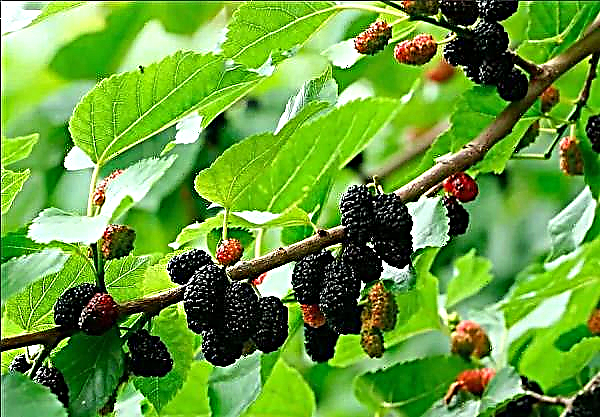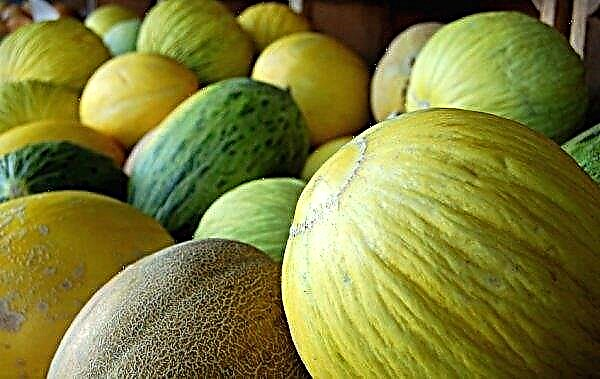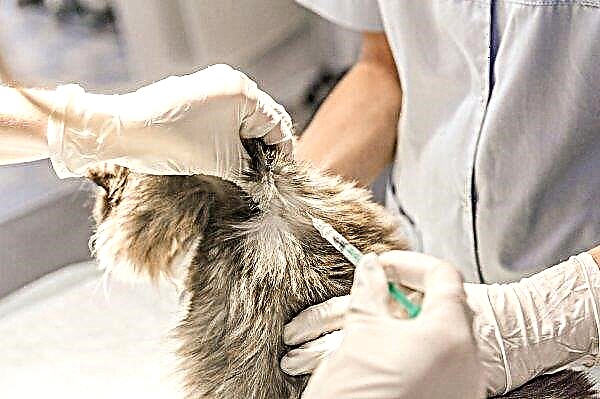Phalaenopsis - capricious exotic flowers that require special care. Amateur gardeners often encounter the problem of drying out the root system when growing orchids at home. It is important to find out in time why this is happening and to strengthen control measures. From the article you will learn about what to do in such a situation.
Why do orchids dry roots: the main reasons
The root system is the main organ of any plant, including orchids. The roots of the flower consist of a substance such as velament, which helps to absorb beneficial trace elements, water, and moisture from the air.
Orchid has an internal and airy root system. They must be carefully monitored, because any changes that occur with the roots, in particular drying out, signal an unhealthy state of the flower.Did you know? The smallest orchid grows in Ecuador (in the reserve Cerro Candelaria). The size of its flowers in diameter is 2.1 mm.
The reasons why the flower has dried roots may be:
- violation of the regime of watering the plant;
- chemical qualities of water for irrigation;
- burn (overfeeding) with fertilizers;
- infectious diseases.
Hard water
Water becomes hard due to its high salt content, especially calcium. The shell of velamament, which received a salt burn, is subject to tearing and is not able to accumulate moisture. If hard water is used to water the plant, soon the entire root system of the orchid will be covered with a brown coating.

Also, due to excess salt, a white powdery coating forms on the ground. Salts negatively affect the composition of the soil and prevent the penetration of air. During evaporation, salts deposited on the substrate can cause burns of aerial roots. In order to avoid unpleasant situations in the future, it is recommended to water the flower with exclusively soft water.
Fertilizer burn
In the process of feeding orchids, a novice grower should adhere to this rule: it is better not to feed more than to overfeed. Fertilizer should not be applied directly to the roots or to a dry substrate. If dressings are used for indoor plants, and not special ones for orchids, the dosage is recommended to be reduced for mineral dressings by 2 times from that indicated on the package, and for organic - by 4 times. Otherwise, all roots will get burned and may dry up and die in the future.
Low humidity
If aerial roots begin to dry up in an exotic flower, then this is a sign of low humidity in the room. Dry air can provoke the development of infectious diseases, and also leads to wilting of foliage, a decrease in flowering intensity, and also to dropping young buds. Orchid is a hardy flower that continues to grow and bloom after the death of the airy root mass.

Infectious diseases
The main enemy of the flower is fungal and bacterial diseases. For further treatment, it is necessary to find out what disease the plant suffers.
To cure orchids, you must adhere to these basic rules:
- create natural conditions for growth;
- isolate the infected plant away from healthy ones;
- eliminate infected areas of the flower;
- disinfect cut-off places with an antiseptic;
- spray with any fungicide ("Fitosporin", "Topaz", "Fundazol").
Did you know? The largest orchid is considered to be a flower grown in Somerset in 1991, the length of the petals of which reached 122 cm.
Mechanical injury
Mechanical injuries of the root system occur due to its fragility.
This is not a big deal, but for disease prevention should:
- maintain the necessary temperature and humidity;
- prune dried root;
- disinfect the damaged area;
- for quick recovery, feed the flower with any mineral fertilizer.
How to identify a problem?
By the appearance of the plant, it is difficult to determine whether the roots of the flower have dried up. To do this, a more detailed examination of the root system of the orchid should be carried out, taking it out of the pot. It is also necessary to remember that in a healthy plant the roots are dense and elastic.

If the flower increases the number of air roots, this also signals a lack of humidity in the room. If spots, tubercles, ulcers appeared on the plant - this indicates the presence of infectious diseases.
How to reanimate an orchid?
The dried roots of the plant can be brought back to life, but this procedure can take from 2 weeks to six months. Let us consider in more detail how to save a flower and restore its roots.
By transplanting into a normal substrate
With slight drying of the roots, the plant is transplanted into a new substrate. The flower is carefully removed from the old soil without damaging the whole roots. Then damaged roots are cut, and bare sections are treated with antiseptics to avoid infection with infectious diseases.
New soil should contain charcoal and bark, moss and perlite. The proportions of the ingredients are affected by humidity. If it is dry, the substrate should be at least 1/3 of the moss.Important! If you had to remove the entire root system, it is first recommended to plant the plant in moist moss to form young roots. Only then transplant the flower into a pre-prepared pot of earth.
Using water softener
There are many ways to soften tap water. The most common are filtering and sedimentation. The filter helps to purify water from salts of heavy metals, fungi and bacteria. To soften the water, you can use the prepared solution of oxalic acid. It is necessary to add 1/8 tsp to a five-liter jar with tap water. acid powder, and let stand for 24 hours. After a day, strain the solution, getting rid of the precipitate.

Water can be softened with wood ash and peat. To do this, add 1 g of wood ash to 1 liter of tap water. If peat is used, it is recommended to dissolve 100 g in 10 l of water. To save the roots that are not completely dried, it is necessary to place them in softened warm water for a couple of hours. It is recommended to dry them for several days. Repeat the procedure until the internal root system is fully restored.
Important! Stimulation of root growth is preferably carried out no more than 2 times a month.
Feeding
On the roots of orchids have a positive effect of liquid nutrition. For their preparation, it is necessary to mix 1 part of glucose, honey and sugar (sucrose) in 1 liter of soft water.
To awaken the kidneys, it is recommended to use baths with root growth stimulants. To do this, dissolve 1 drop of the Epin preparation in 1 liter of water. Observing the proportions and the feeding schedule, you will saturate the plant with the necessary elements and prevent the roots from drying out.
What to do for prevention?
You can also find out

In order to avoid drying out of the roots in the future, it is necessary to adhere to the following conditions for orchid cultivation:
- the temperature in the summer should be in the range from + 22 ° С to + 25 ° С, and in the winter +16 ... + 18 ° С, the temperature difference - not more than 5 ° С;
- the capacity under the plant must match its size;
- lighting should be diffused;
- air humidity should be 50-60%;
- update the substrate every 2-3 years;
- carry out irrigation with warm water once a week;
- the soil between the irrigations must be dry.












